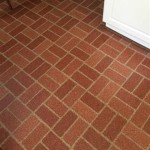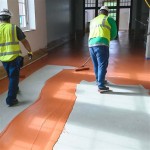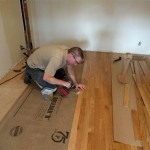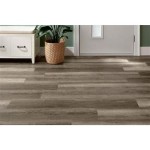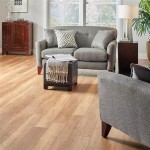Essential Aspects of Engineered Hardwood Flooring Floating Installation
Engineered hardwood flooring offers a stunning and durable option for homeowners seeking a warm and elegant floor covering. Floating installation, a popular method for DIY enthusiasts, provides a convenient and cost-effective way to install engineered hardwood without the need for nails or adhesives. Here are the essential aspects to consider for a successful floating installation:
1. Subfloor Preparation
A level and stable subfloor is crucial for a smooth installation. Remove any existing floor coverings, level the subfloor using a leveling compound if necessary, and ensure it is free from moisture. A moisture barrier should be installed on concrete subfloors to prevent moisture penetration.
2. Underlayment Installation
An underlayment provides a cushioning layer between the subfloor and engineered hardwood, reducing noise and improving thermal insulation. Choose an underlayment specifically designed for floating installations, such as cork, rubber, or foam underlayment. The underlayment should be installed perpendicular to the direction of the engineered hardwood planks.
3. Plank Placement
Start the installation by laying a spacer along one wall to maintain a consistent gap around the perimeter. Begin by snapping the planks together along the longest wall, using a tapping block and hammer to ensure a tight fit. Offset the end joints of each row to increase the strength of the floor.
4. Edge and Transition Installation
After completing the main floor area, install edge and transition pieces such as baseboards, moldings, and thresholds. These components help to conceal the perimeter gap, provide a finished look, and facilitate transitions between different flooring materials.
5. Floating Requirements
Floating floors are designed to expand and contract with changes in temperature and humidity. Therefore, it is crucial to leave a small expansion gap around the perimeter of the floor, covered by the baseboards. Avoid installing engineered hardwood flooring in areas with excessive moisture or below-grade levels.
6. Maintenance and Care
Once installed, engineered hardwood floors require proper maintenance to preserve their beauty and durability. Sweep or vacuum regularly to remove dust and debris. Use a damp mop with a recommended cleaning solution specifically designed for engineered hardwood flooring. Avoid using harsh chemicals or abrasive cleaners that can damage the finish.
Conclusion
By following these essential aspects, you can achieve a professional-looking and durable floating installation of engineered hardwood flooring. Remember to plan carefully, prepare the subfloor thoroughly, and use the appropriate materials and tools. With proper maintenance and care, your engineered hardwood floor will provide years of enjoyment and enhance the aesthetic appeal of your home.

Flooring Fixing Methods Floating Floors Direct Wood Blog

How To Install Lock Engineered Hardwood Flooring

How To Install Lock Engineered Hardwood Flooring

Floating Engineered Hardwood

What Is A Floating Floor Pros And Cons Esb Flooring

How To Install An Engineered Hardwood Floating Floor With Finishing Tips

Glue Down Vs Floating Wood Floor Installation Finfloor

What Is A Floating Floor Pros And Cons 50floor

Floating A Wood Floor Hardwood Floors

The Ultimate Guide To Engineered Hardwood Flooring Precision

